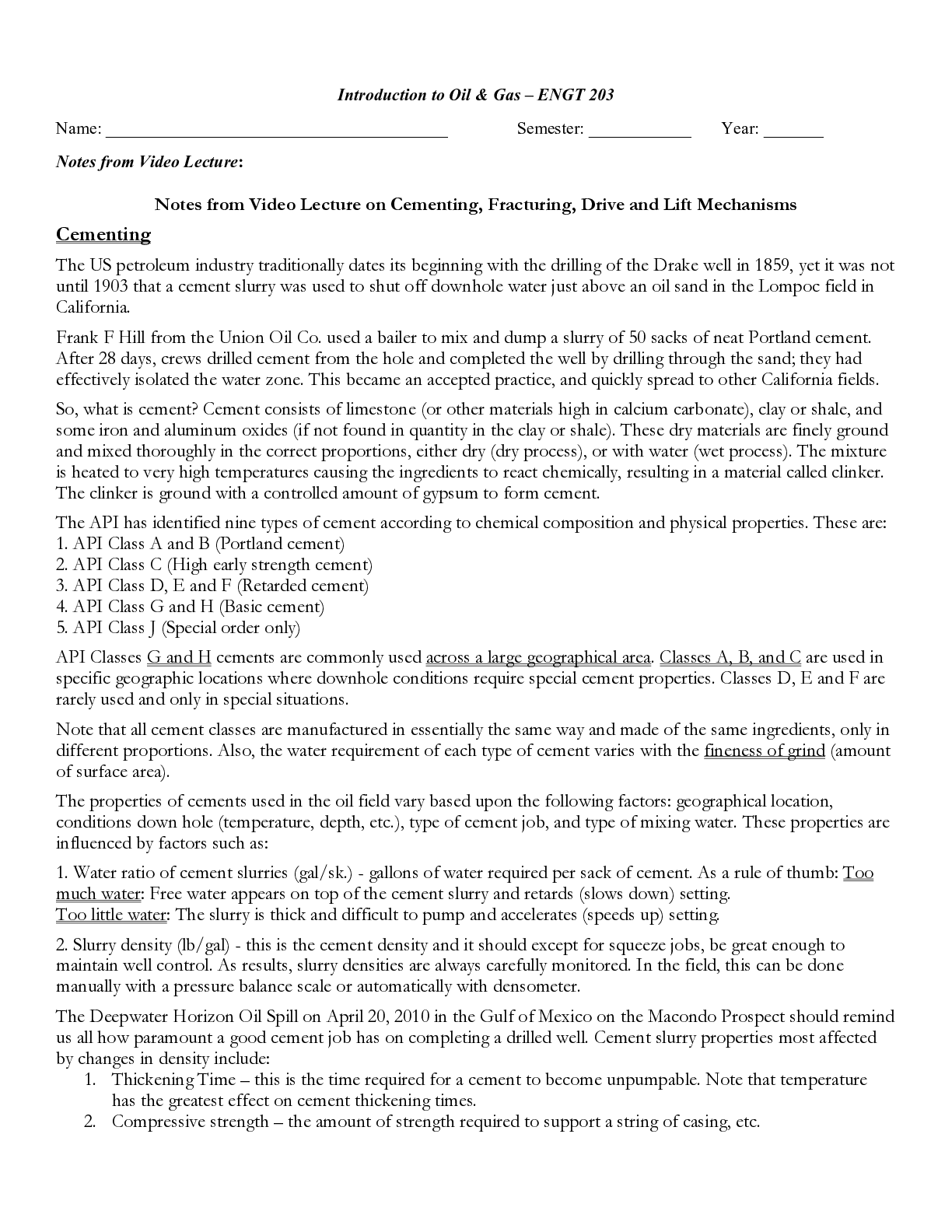Engineering > Dissertation > cementing, fracturing and drive mechanisms of crude oil (All)
cementing, fracturing and drive mechanisms of crude oil
Document Content and Description Below
Cementing The US petroleum industry traditionally dates its beginning with the drilling of the Drake well in 1859, yet it was not until 1903 that a cement slurry was used to shut off downhole water ... just above an oil sand in the Lompoc field in California. Frank F Hill from the Union Oil Co. used a bailer to mix and dump a slurry of 50 sacks of neat Portland cement. After 28 days, crews drilled cement from the hole and completed the well by drilling through the sand; they had effectively isolated the water zone. This became an accepted practice, and quickly spread to other California fields. So, what is cement? Cement consists of limestone (or other materials high in calcium carbonate), clay or shale, and some iron and aluminum oxides (if not found in quantity in the clay or shale). These dry materials are finely ground and mixed thoroughly in the correct proportions, either dry (dry process), or with water (wet process). The mixture is heated to very high temperatures causing the ingredients to react chemically, resulting in a material called clinker. The clinker is ground with a controlled amount of gypsum to form cement. The API has identified nine types of cement according to chemical composition and physical properties. These are: 1. API Class A and B (Portland cement) 2. API Class C (High early strength cement) 3. API Class D, E and F (Retarded cement) [Show More]
Last updated: 2 years ago
Preview 1 out of 3 pages

Buy this document to get the full access instantly
Instant Download Access after purchase
Buy NowInstant download
We Accept:

Reviews( 0 )
$6.00
Can't find what you want? Try our AI powered Search
Document information
Connected school, study & course
About the document
Uploaded On
May 21, 2021
Number of pages
3
Written in
Additional information
This document has been written for:
Uploaded
May 21, 2021
Downloads
0
Views
89



